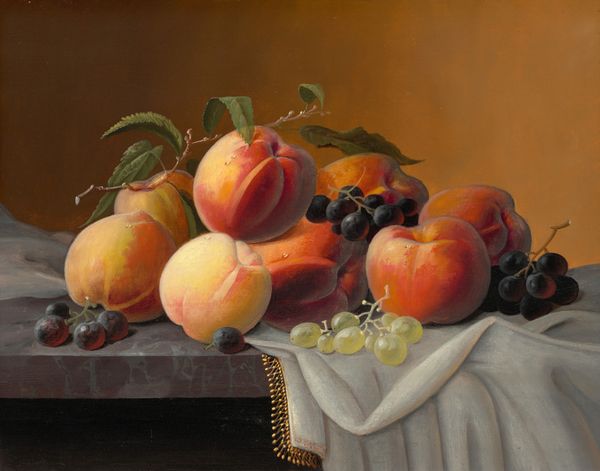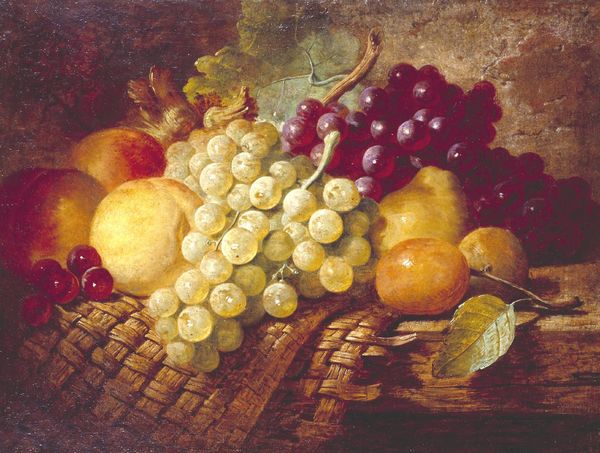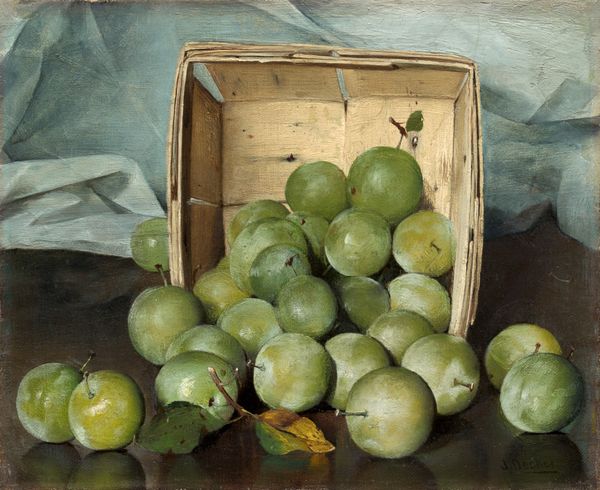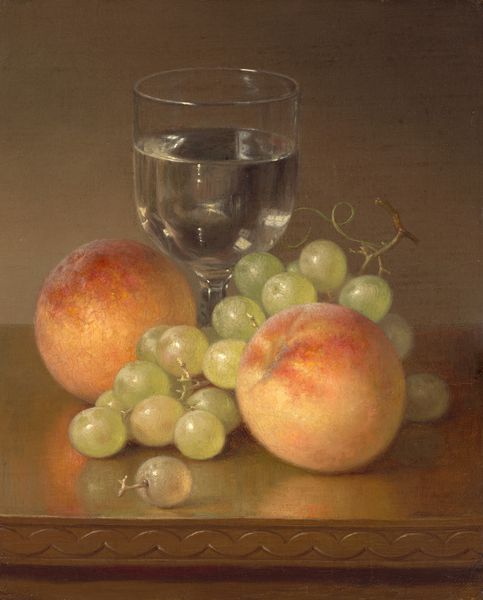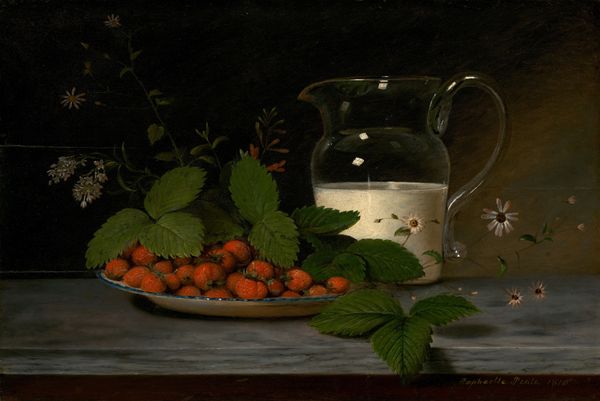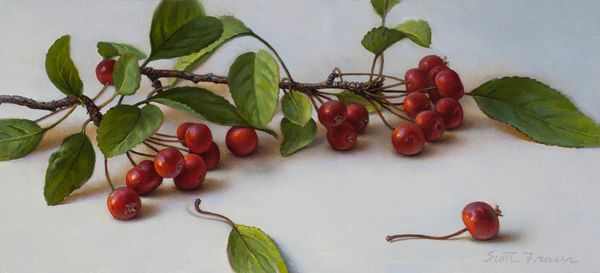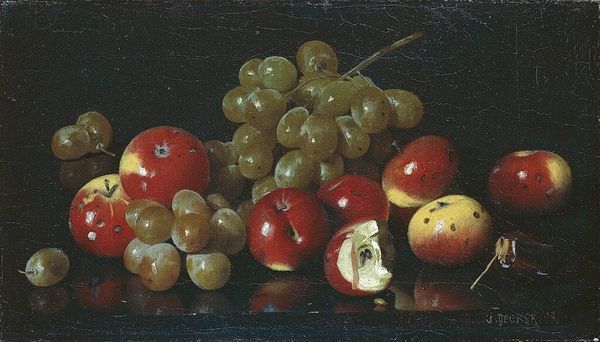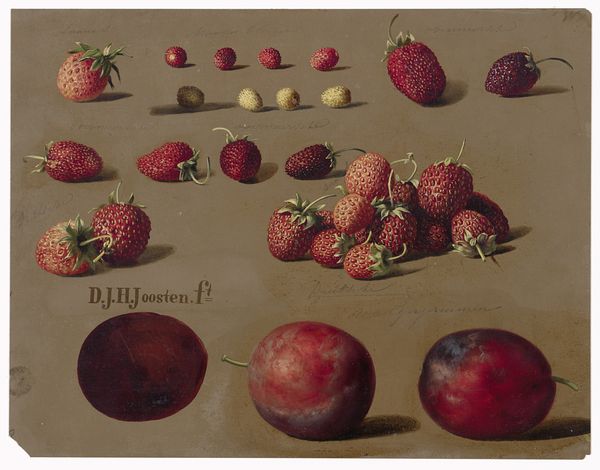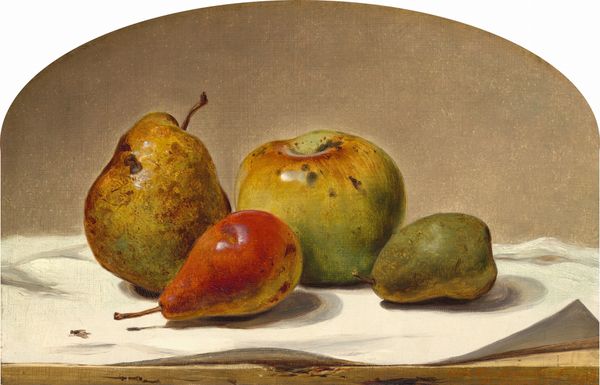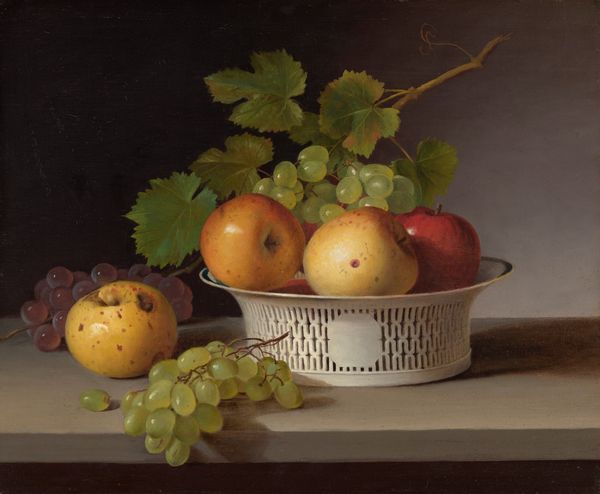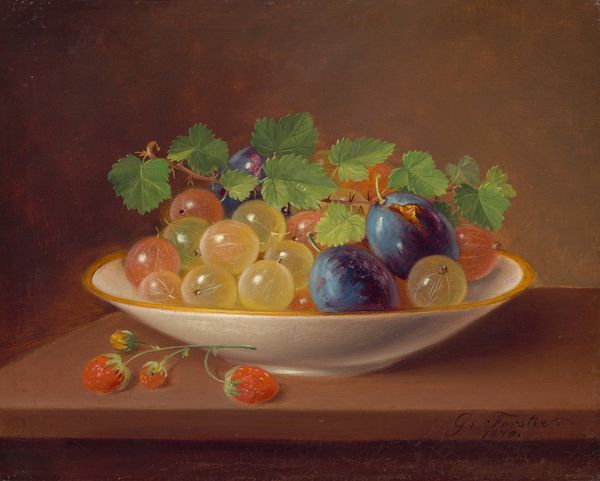
plein-air, oil-paint
#
plein-air
#
oil-paint
#
oil painting
#
genre-painting
#
realism
Dimensions: overall: 16.51 × 22.86 cm (6 1/2 × 9 in.) framed: 24.13 × 30.8 × 6.35 cm (9 1/2 × 12 1/8 × 2 1/2 in.)
Copyright: National Gallery of Art: CC0 1.0
Editor: Here we have "Red Cherries," an oil painting by Robert Spear Dunning from 1866. There’s something so simple and immediate about it; it’s a small painting of a basket overflowing with ripe, red cherries. What stands out to you? Curator: I notice immediately how the cherries, and particularly their color, work. Red, especially saturated like this, speaks to vitality and desire. The choice to paint cherries specifically, a fruit often linked with temptation and abundance throughout art history and mythology, lends the painting a subtle, almost playful symbolism. Editor: Temptation, that's an interesting connection. Like the forbidden fruit in Eden? Curator: Precisely. The reflection on the surface beneath enhances the feeling of overflowing abundance, even excess. It is very dreamlike, even sensuous, the way the cherries seem to spill forth. Do you think it is more generally representative of the abundance of the harvest or, something else? Editor: I'd say that because they’re cherries it’s more personal; those bright colours draw you in so quickly, it's not a bland or common fruit we might overlook so it almost embodies greed. That little dark cherry is interesting, the singular outlier Curator: Exactly! That lone darker cherry acts as a focal point, a singular element that brings a sense of grounded reality and anchors our visual interpretation of desire within reality. We must think that such beauty also brings the promise of, quite naturally, decline. Editor: It definitely makes me look at the piece in a new way. Thinking about it as more than just a still life is compelling. Curator: Yes, by thinking of iconography, these realistic paintings go beyond capturing a simple subject matter.
Comments
No comments
Be the first to comment and join the conversation on the ultimate creative platform.

